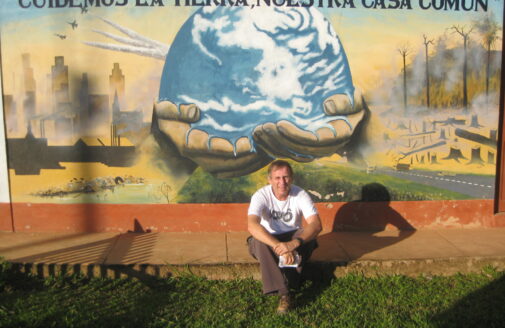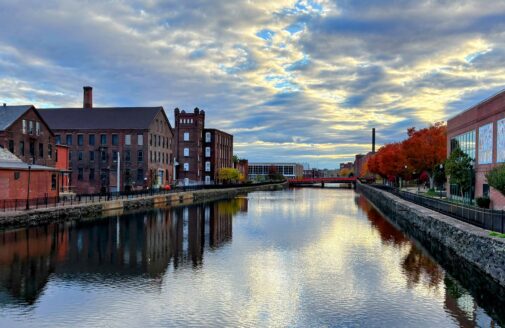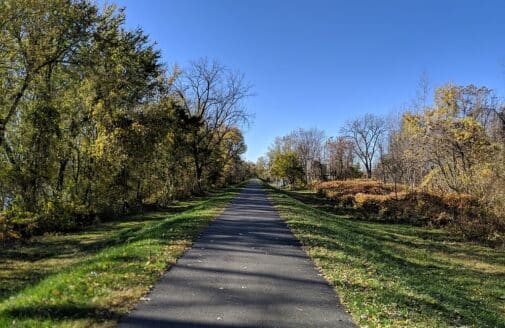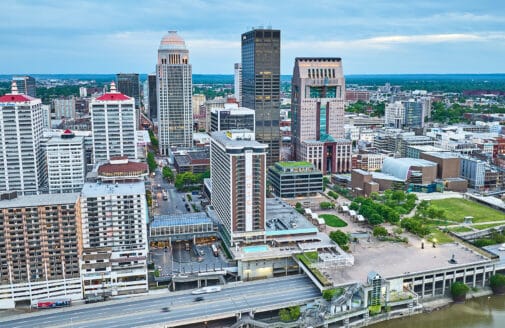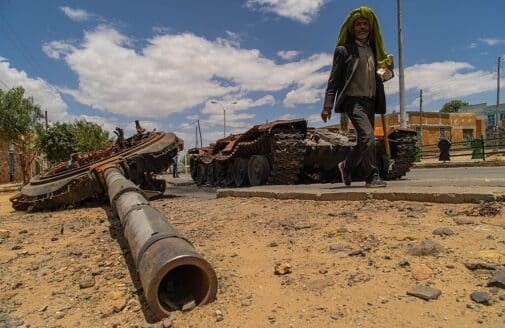How climate data helps protect the future of Las Vegas
Woodwell’s Just Access team listens to locals to help bolster climate resilience in Las Vegas and communities around the world
Las Vegas, Nevada is home to over 600,000 people
photo courtesy of Porque No Studios
This year, Las Vegas, Nevada broke its all-time heat record, reaching 120° F.
The temperature was recorded at Harry Reid International Airport on July 7, 2024. That week, between July 6 and July 12, was the new hottest 7-day period on record, with an average high temperature of 117.5° F.
This is the daily reality for Vegas residents in the summer. Record-breaking temperatures are hard to bear, but so were all the hot days and nights that came before. Commuters frequently see temperatures above 120 flash on their vehicle dashboards, and outdoor workers struggle to do their daily tasks under the hot sun.
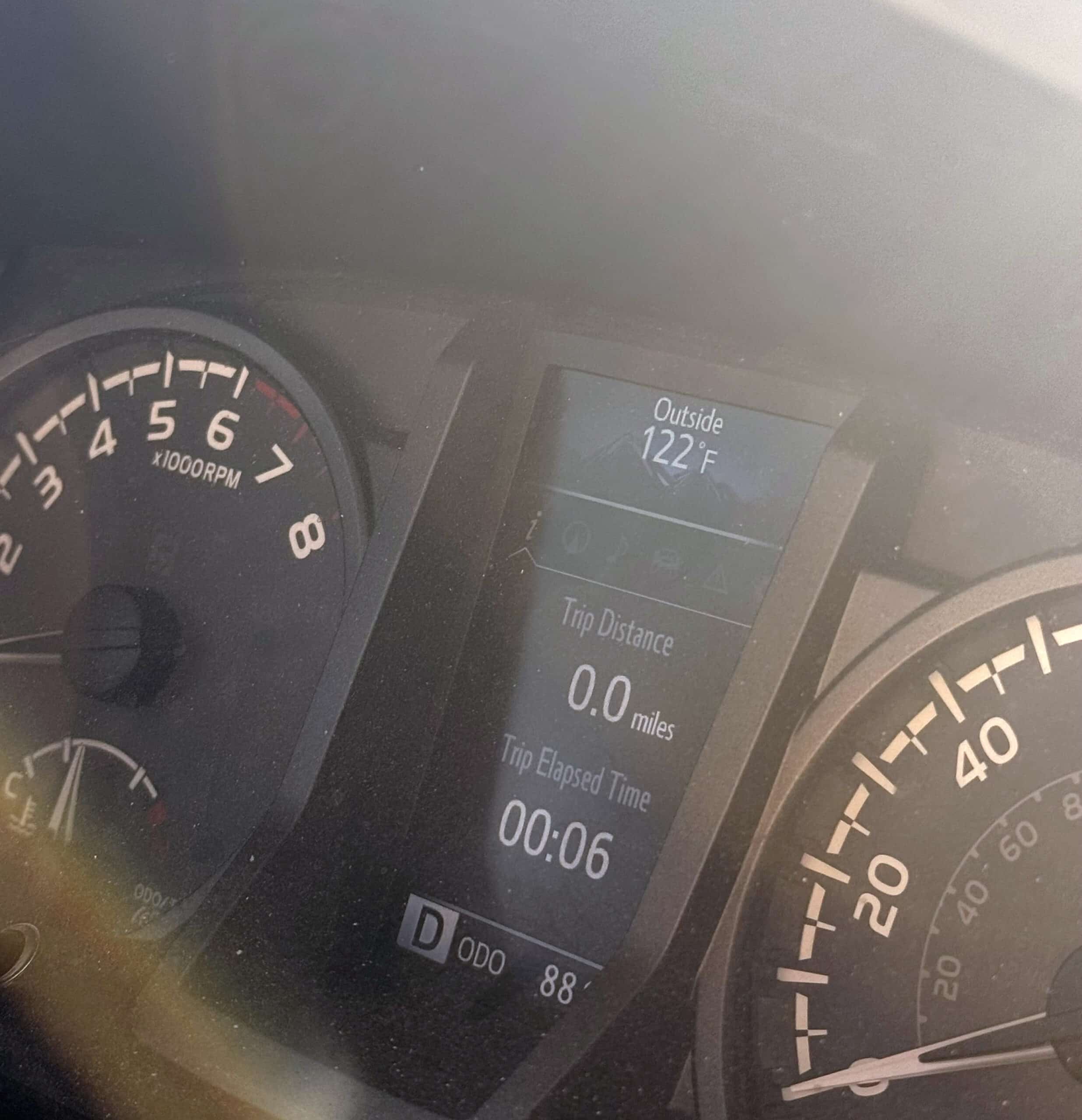
In July, 2024, Las Vegas experienced record high temperatures for over a week.
photo by Monica Caparas
This is the daily reality for Vegas residents in the summer. Record-breaking temperatures are hard to bear, but so were all the hot days and nights that came before. Commuters frequently see temperatures above 120 flash on their vehicle dashboards, and outdoor workers struggle to do their daily tasks under the hot sun.
“There’s a disconnect between climate science and the people who live here,” says Woodwell Climate Research Associate, Monica Caparas. “Vegas residents know our summers are hot and unbearable. Understanding climate change is driving the extreme weather we’re experiencing is where the disconnect lies. ”
Caparas moved to Las Vegas as a child. She grew up there, left for college, and returned to settle into her adult life. Today, she works for Woodwell Climate’s Risk team remotely from her home in the city. Caparas knows the ins and outs of local life. These include Vegas’s rapid population expansion, the groups of people experiencing homelessness sheltering in underground stormwater infrastructure, and the heat that was unbearable before it started making headlines.
Experiencing climate change without shelter
Caparas’s work with the Risk team aims to provide communities like Las Vegas with an accurate picture of the climate-driven changes in their future. These “risk assessments” are provided through Woodwell Climate’s Just Access program, which uses the most accurate climate models, in collaboration with local knowledge, to anticipate future community safety threats. The analyses have brought to light growing threats from flooding, heat, storms, and more. The team provides assessments, free of charge, to states, cities, and countries across the world.

Just Access team member Dominick Dusseau presents risk data for Ethiopia at COP 29 in Baku, Azerbaijan.
photo by Sitara Ibrahimbayli/ Hi Impact
Just Access serves what Risk Program Director Christopher Schwalm calls “frontline communities.” The term describes groups of people who are over-exposed, under-resourced, underserved, historically marginalized, and therefore the most at-risk to the repercussions of climate change. In the risk assessment for Las Vegas, people experiencing homelessness are front and center.
“Between May 20th and the first week in July, about 20 people who were experiencing homelessness died of heat,” says Dr. Catrina Grigsby-Thedford, Executive Director of the Nevada Homeless Alliance (NHA) and community partner in Las Vegas.
The NHA estimates that almost 8,000 people are experiencing homelessness on any given night in southern Nevada. The number is only growing. Grigsby-Thedford says that this year’s unhoused population is up 1,300 people compared to 2023.
“Often our shelters are full,” Grigsby-Thedford says, “We’re limited by shelter beds and space.”
The NHA’s shelters do open all day in extreme heat, but so many people packed tightly together is still unsafe.
With nowhere to go, some seek shelter underground in Las Vegas’s stormwater infrastructure. While the tunnels are cooler out of the sun’s reach, they are at risk from flooding. Across the region, extreme precipitation is expected to increase by 12-14% by 2050, raising flood risk in the city and especially within the tunnels.
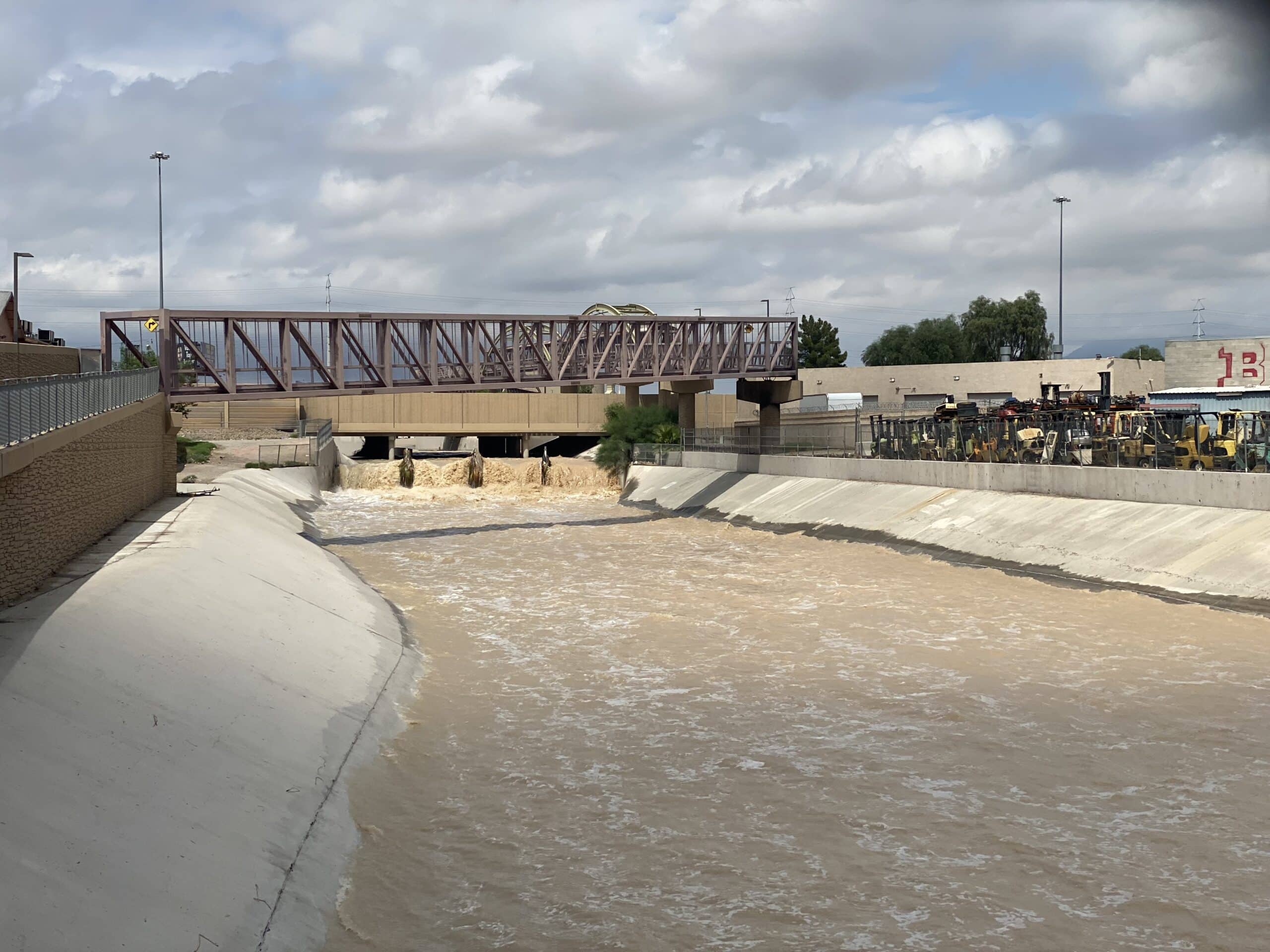
Flooding in Las Vegas’s stormwater system in September, 2023.
photo by Monica Caparas
To combat lack of space and shelter, the NHA hosts 4-8 one-stop resource fairs per month. The events, called Project Homeless Connect, serve both people experiencing homelessness and low-income residents in Las Vegas. Grigsby-Thedford says these events “fill in gaps”—offering housing assistance, medical care, hygiene care, and other resources.
Despite all of this work, many unhoused people are hesitant to engage with organizations like the NHA. Grigsby-Thedford says “choice is often a challenge,” and that when people grow accustomed to the way things are, they often accept it and choose to stay.
Picturing risk
Building trust with communities, especially those predisposed to mistrust outside actors, is essential in this work. Which is why, Schwalm says, Woodwell Climate approaches risk work with the goal of “meet[ing] people where they are.”
That means “scoping,” the team’s word for listening to what community and government leaders want out of the risk analysis—what concerns they have, weak points they’ve identified, and what help might be needed post-analysis.
“Two-thirds of the time we spend from start to finish falls into this scoping idea, rather than doing analysis itself,” Schwalm says.
Scoping frames the data the risk team collects, as well as who their partners will be during the risk analysis process.
“We find people who are practical and recognize that there’s a problem,” Schwalm says, “We only work with communities who want to work with us.”
Following the scoping process, the Risk team compiles an analysis of extreme weather events and subsequent risks each community will face as climate change progresses.
“We perform a stress test of that particular geography to identify weak points,” Schwalm explains.
Then, the Risk team uses the most up-to-date climate models possible to predict changes in extreme weather and regional climate. By using predictive models, the team focuses efforts on what the future will hold, as opposed to using past strategies.
“We need to use the future to predict the future,” Schwalm says simply.
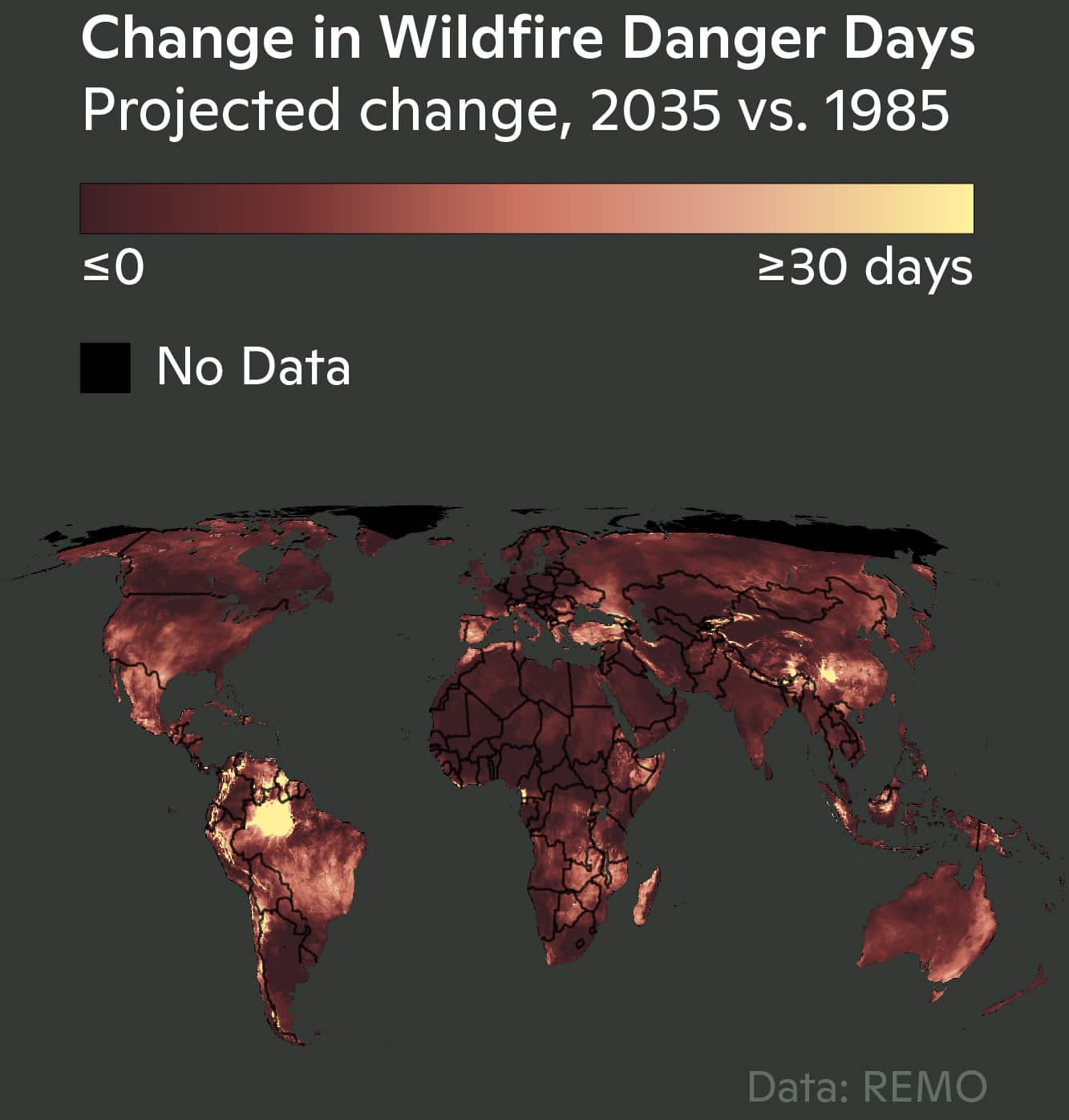
The Just Access team works with data like this Wildfire Danger Days dataset to model future risks.
map by Christina Shintani
Making climate risk data accessible to all
Over the past three years, Just Access has provided 50 communities—that’s about a quarter billion people—with risk analyses. These communities span the U.S., Central and South America, Africa, Asia, and Oceania. They’ve worked with countries, like the Democratic Republic of Congo, where they helped update the country’s National Adaptive Plan, states like Chiapas in Mexico, groups like Cree Nation in Canada, and other communities, now including Las Vegas.
Despite all of this work, though, Schwalm says there is still room to grow.
“Fifty communities is kind of only a drop in the bucket,” he says, “We’re not going to make a huge dent in this unless we move beyond working community-by-community.”
Two major roadblocks for Just Access are finite resources: time and money. Individual risk analyses require a lot of time and communication to address risks in relatively small areas.

A Woodwell team traveled to Louisville, KY for an in-person scoping of the city’s flood infrastructure.
photo by Andrew Condia
The other obstacle, money, is something climate research could always use more of. Grants and donations are crucial in order for analyses to remain free, and those sometimes come with limitations.
“There’s a tension from the funder to work in a specific geography sometimes,” Schwalm says, “It’s a juggling act.”
Climate change can also be a politicized topic. In order to meet people where they are, sometimes the Risk team implements changes in language used to communicate with community leaders. This can be a change as simple as using “extreme weather” instead of “climate change.” As long as everyone in the room is ready to confront what the future holds, they’re all working on the same page towards the same goal.
“We’ve done red states, blue states, rural, urban,” Schwalm continues. “We’ve learned how to read the room.”
Creating the foundations for change
Woodwell Climate’s involvement in Las Vegas brings to light the way justice issues, like homelessness, interact with growing threats from climate change.
“In the Las Vegas risk assessment, we are focusing on the disproportionate impacts of the climate crisis on communities already facing systemic socio-economic inequity,” says Caparas. “We must think about intersectionality in order to address climate justice.”
Not only does climate change represent a current crisis for those experiencing homelessness, communities with fewer resources are now at greater risk of being made homeless by future climate-related disasters. Accurate climate risk information can support organizations like NHA as they develop strategies to serve people experiencing homelessness in a more extreme future.

List of cooling stations available to Las Vegas citizens in July, 2024
courtesy of NHA
Grigsby-Thedford says that NHA members, especially those with lived experience of homelessness who work as Lived X Consultants, are always looking to be involved in projects like the one Caparas leads.
“We always talk about weather in our meetings,” she says, “So this is perfect, someone’s actually doing research about this. Anything that impacts [Las Vegas’s homeless population], we want to make sure we’re involved in that.”
For the Las Vegas risk assessment, Caparas is working with the NHA and Southern Nevada Lived X Consultants to understand climate risks around cooling stations in public buildings, which are a vital, air-conditioned shelter when the heat index is too high. Grigsby-Thedford says there were many more cooling stations in 2023 and 2024 compared to previous years.
Caparas also forged a connection with Miguel Dávila Uzcátegui, Southern Nevada’s Regional Transportation Commission (RTC) Senior Planner and board member of Help Hope Home. Together, they are developing a database of flooding infrastructure and updating the city’s flooding model with future climate projections. The RTC will integrate the Risk team’s model into regional planning work, updating Las Vegas’s flooding and transportation infrastructure for community safety.
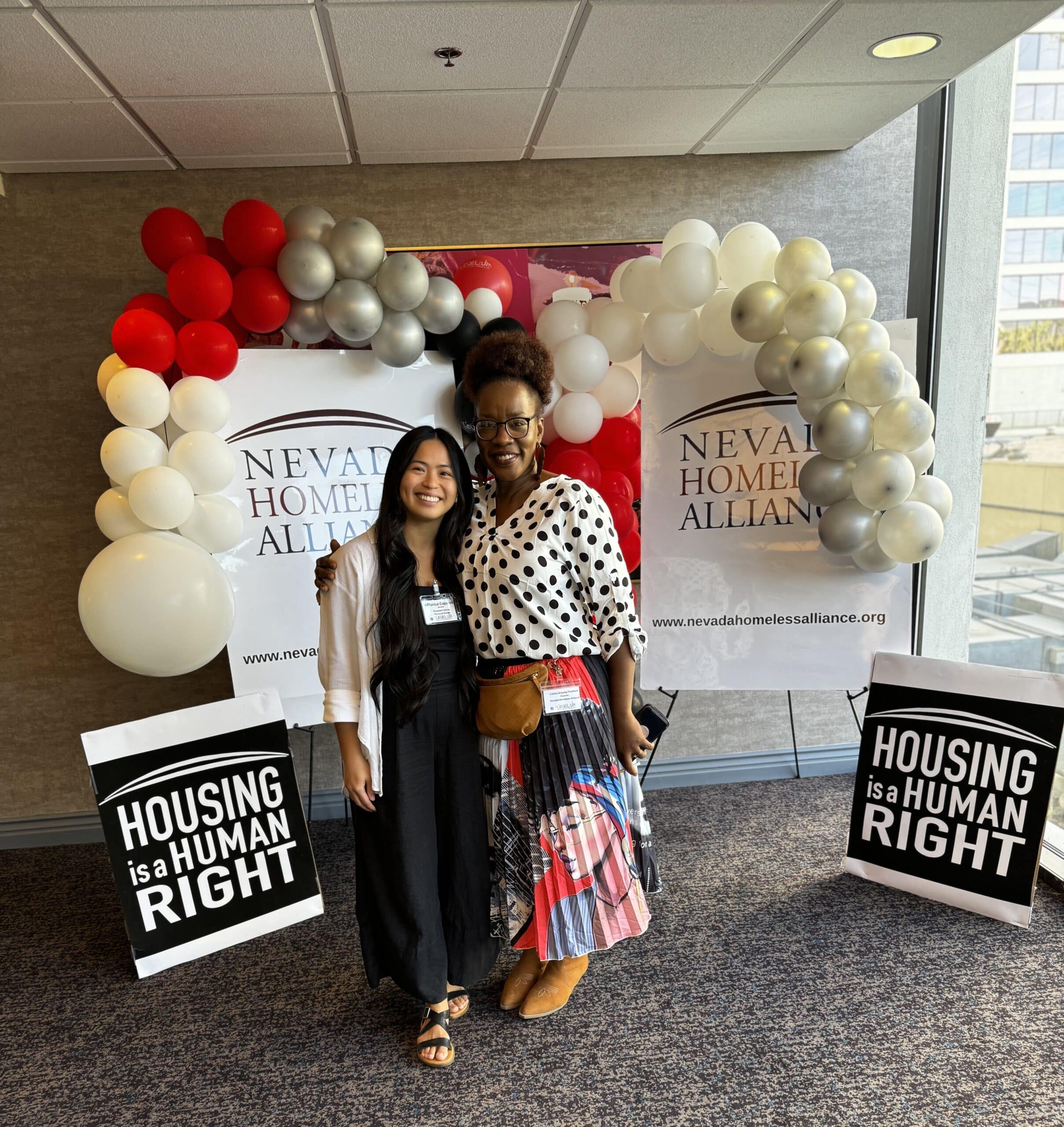
Caparas and Grigsby-Thedford at an NHA event.
photo courtesy of Monica Caparas
None of this work would have been possible without Caparas’s diligent bridge building between the scientific resources of Woodwell Climate and the needs of people in her own community. Those connections allow science to be informed first and foremost by those most affected by climate change.
“The people closest to the problem are the people closest to the solution,” says Grigsby-Thedford.






